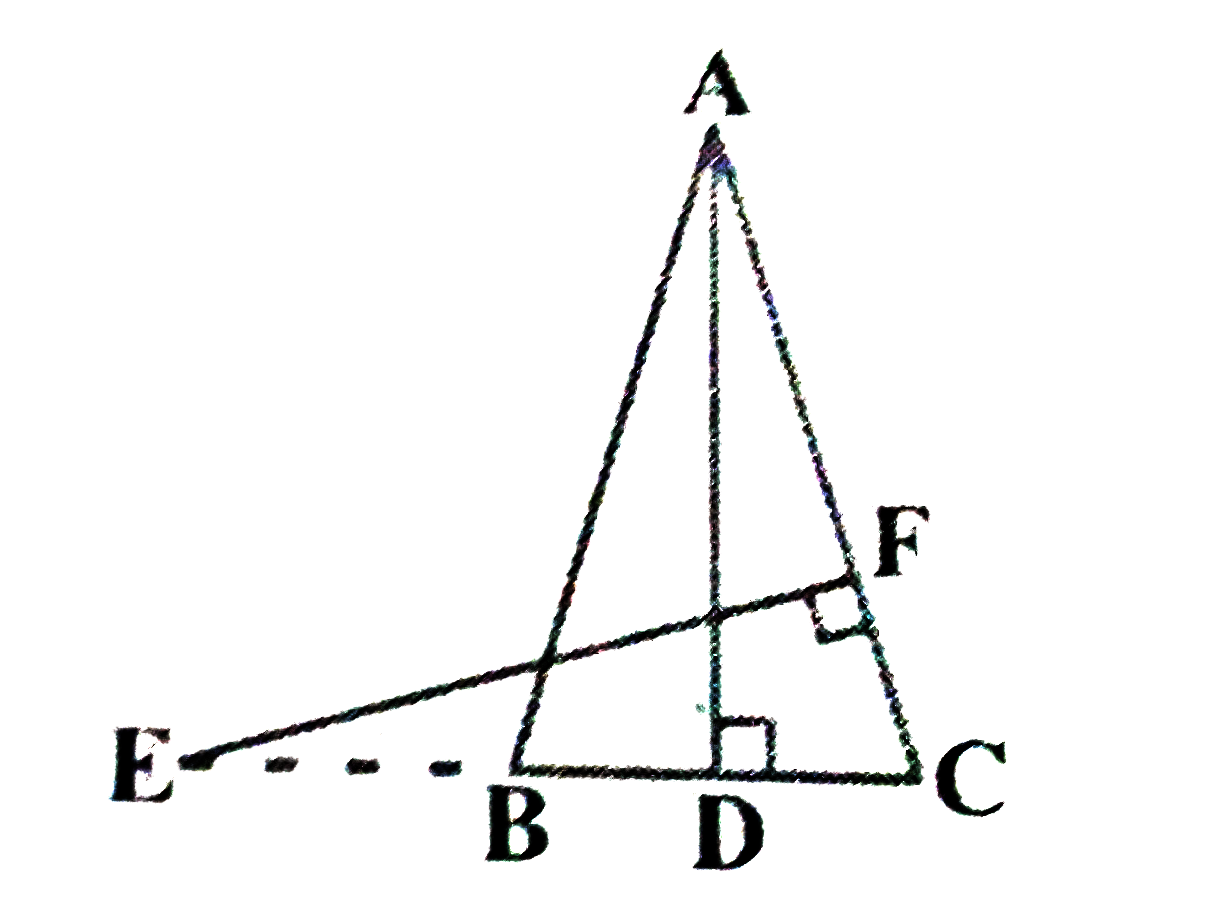In Figure, AB⊥BC,FG⊥BC and DE⊥AC.Provetˆ△ A D E~G C F
To prove that triangle AED∼GCF, we will use the Angle-Angle (AA) similarity criterion. Here’s a step-by-step solution:
Step 1: Identify the Given Information
We are given:
- AB⊥BC
- FG⊥BC
- DE⊥AC
Step 2: Establish the Right Angles
From the given information, we can conclude:
- ∠ABE=90∘ (since AB⊥BC)
- ∠FGC=90∘ (since FG⊥BC)
- ∠DAE=90∘ (since DE⊥AC)
Step 3: Identify Corresponding Angles
Since AB∥FG and AC is a transversal line:
- ∠DAE=∠GFC (alternate interior angles)
Step 4: Apply the AA Criterion
Now we have:
1. ∠DAE=∠GFC
2. ∠ABE=90∘=∠FGC
Since two angles of triangle AED are equal to two angles of triangle GCF, we can conclude by the AA similarity criterion that:
△AED∼△GCF
Conclusion
Thus, we have proved that triangle AED is similar to triangle GCF.
---
We are given:
- AB⊥BC
- FG⊥BC
- DE⊥AC
From the given information, we can conclude:
- ∠ABE=90∘ (since AB⊥BC)
- ∠FGC=90∘ (since FG⊥BC)
- ∠DAE=90∘ (since DE⊥AC)
Since AB∥FG and AC is a transversal line:
- ∠DAE=∠GFC (alternate interior angles)
Now we have:
1. ∠DAE=∠GFC
2. ∠ABE=90∘=∠FGC
△AED∼△GCF
Thus, we have proved that triangle AED is similar to triangle GCF.
Topper's Solved these Questions
Similar Questions
In Figure, AC=BC,∠DCA=∠ECB and ∠DBC=∠EAC. Prove that triangles DBC and EAC are congruent, and hence DC=EC and BD=AE
View SolutionIn Figure, AC=BC, ∠DCA=∠ECB and ∠DBC=EAC. Prove that triangle DBC and EAC are congruent, and hence DC=EC and BD=AE
View SolutionIn figureE is a point on side CB produced of an isosceles △ABC with AB=AC. If AD⊥BCandEF⊥AC, prove thatΔABD~ΔECF.
 View Solution
View SolutionIn Figure, it is given that AB=EF, BC=DE, AB ⊥BD and FE ⊥CE. Prove that ABD ≅FEC.
View SolutionIn Figure, it is given that AB=EF,BC=DE,AB⊥BD and FE⊥CE. Prove that ABD≅FEC.
View SolutionIn Figure, AC=AE, AB=AD and ∠BAD=∠EAC. Prove that BC=DE
View SolutionIn Figure, DEFG is a square and ∠BAC=90 . Prove that (i) A G F ~ D B G(ii)AGF~EFC (iii) D B G ~ E F C(iv)DE2=BDxEC
View SolutionIn Figure, DE∣∣AC and DF∣∣AE . Prove that EFBF=ECBE .
View SolutionIn Figure, AB||CF and BC||ED . Prove that ∠ABC= ∠FDE
View SolutionIn Figure, ABC and BDE are two equilateral triangls such that D is the mid-point of BC. If AE intersects BC in F, Prove that: ar(BDE)=14ar ( ABC).
View Solution

